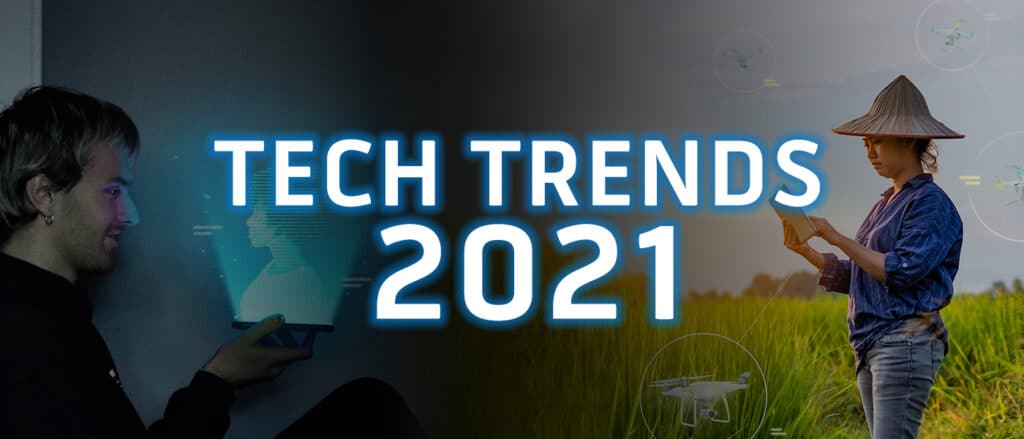
Telenor Research predicts 5 digitalisation trends that will be accelerated by Covid-19 pandemic
The ongoing Covid-19 pandemic has changed the face of how we live and do business in almost every single way. It has also proved to be an impetus for digitalisation across a host of industries.
“The pandemic has triggered us and nearly every industry around the globe to adapt at a rate once thought impossible. The past year has proved that digitalisation will be key to tackling major societal issues and to facilitate new ways of working and living in 2021,” says Bjørn Taale Sandberg, Head of Telenor Research.
“We are now well into the Covid-19 situation, which has accelerated the shift to digital in all aspects of our daily lives. This is observed in all layers of our society, which supports the trends presented here. It is important that we are aware of the changes happening around us and equip ourselves to take advantage of the various innovations and technologies. In turn, this will help improve the way of life for many others,” said Anwar Ishak, Digi’s Head of Digital IT.
In an online briefing, Bjørn and Ishak shared their insights and predictions on 5 digitalisation trends that are being accelerated in the wake of the ongoing Covid-19 pandemic and how these trends will affect society in the years to come.

Digitalisation Trend 1: Tech supplements to tackle mental health maladies
Table of Contents
Covid-19 has given rise to a growing percentage of people who feel isolated and lonely, triggering a host of new health concerns. Chronic isolation feeds a range of health maladies such as anxiety and depression.
“2020 showed us that loneliness is a fundamental public health issue; a health issue that we believe will face an unprecedented technological response in 2021. We predict that eHealth actors will develop and roll out new sets of tools and services related to mental health. In countries with full 5G implementation, we will likely see the first uses of augmented and virtual reality technology applied in holographic communication tools, already within the next year,” adds Sandberg.
A new generation of chatbots, specifically designed to engage and help people who struggle with loneliness, will also be launched. Drawing on artificial intelligence (AI), these personalised digital helpers can respond to questions, initiate calls, offer entertainment, and conduct enriching activities that enhance feelings of being connected.
Digitalisation Trend 2: A digital springboard for green tech
“The pandemic has triggered much needed climate-friendly actions. We believe governments will use the momentum of 2020 to pave the way for a green recovery in 2021, putting climate laws and climate plans into action,” says Sandberg.
In cities all over the globe, artificial intelligence will be implemented to optimise energy consumption in data centres and mobile base stations.
It will help make renewable energy, such as wind power, more predictable, and ‘smarten’ up cities by optimising transport and predicting air quality. AI-powered micro IoT devices, called Tiny Machine Learning (TinyML), start operating as ultra-small and ultra-low powered drones take to the sky to expand drone monitoring of climate-exposed areas through image processing.
Outside the cities, new autonomous modular robots will work in the fields, supporting farmers who struggle to find agricultural workers. Mechanical weeding with machine vision will streamline the use of pesticides, thus reducing the environmental impact of agriculture.
Digitalisation Trend 3: Password panic emerges as symptom of cyber security challenges
In 2021, those who are not equipped with proper password solutions or who do not maintain strict digital hygiene will experience a surge in what can be defined as ‘password panic’. This is the feeling of utter hopelessness and frustration that occurs when your mind draws another password blank.
This is compounded by the ever-increasing number of password-protected accounts you need to manage, as well as the general advice to change your passwords every three months and not reuse old passwords, which doesn’t exactly relieve any stress.
“As employees waste precious time struggling to remember their login details, we expect to see greater implementation of user-friendly security solutions in 2021. Password managers across sectors or iris and fingerprint scanning solutions will be more common, ensuring efficiency, security, and one less pain point for workers,” predicts Sandberg.
DigitalisationTrend 4: Society-as-a-service offers much-needed work flexibility
In 2020, hordes of employees left their offices to work from home. This enormous and sudden transition happened rather seamlessly, confirming once and for all that connectivity and the right digital tools enable work to be performed anywhere, at any time.
This shift will create new expectations among employees, especially concerning increased flexibility to work from home or other locations regularly to enable a better work-life balance. People also expect to find amenities that support and facilitate their digital work style wherever they go, marking the dawn of the society-as-a-service age. Don’t be surprised when the coffee shops of today turn into the meeting rooms of tomorrow.
“In 2021, we expect many companies to provide employees with more flexibility to carry out their work outside the office walls. To ensure the necessary competence for the future way of work, managers will increase the upskilling of employees in cyber security, digital hygiene, and the use of digital tools and technologies,” explains Sandberg.
Digitalisation Trend 5: Mind the educational gap
While the Covid-19 lockdowns have led to a wave of innovations and important progress in digital learning, it has done less to reduce the global education gap. Millions of children and young people who currently lack internet access at home suffered the loss of education in 2020 when schools went into lockdowns.
In 2021, we expect to see an escalating number of new and creative methods of remote, digital learning to emerge from the rapidly advancing virtual learning sphere. Those equipped with network access and internet-capable devices will be able to take part in this digital leap and reap the rewards. The unconnected will however lose ground.
“If this urgent issue is not properly addressed, both internationally and within nations, we risk significant setbacks and a widening educational gap in the coming years. In order to bridge this gap, the education sector and ICT actors must join forces, working together to ensure robust and faster networks, and to promote and support digital literacy for all,” concludes Sandberg.

